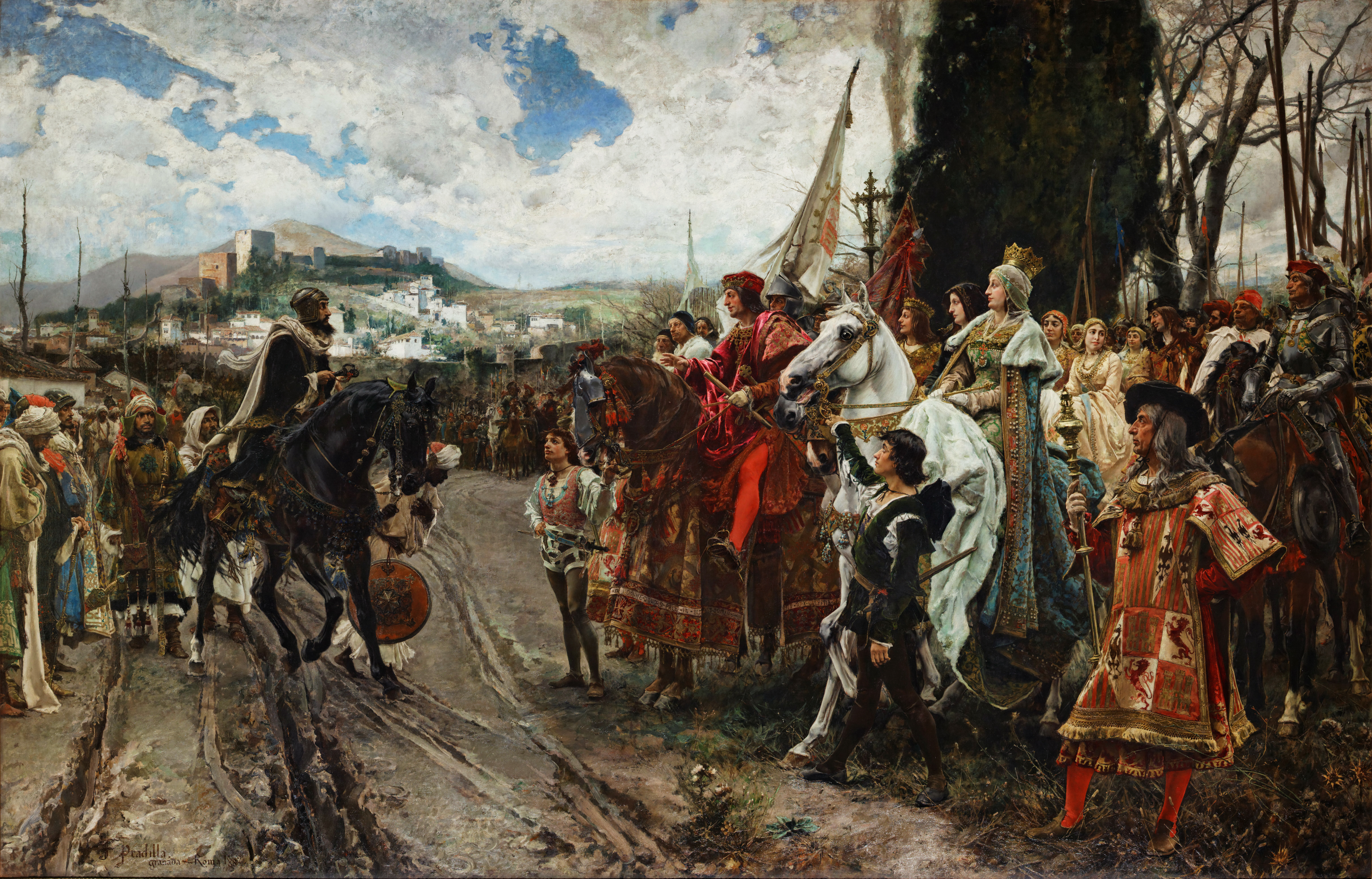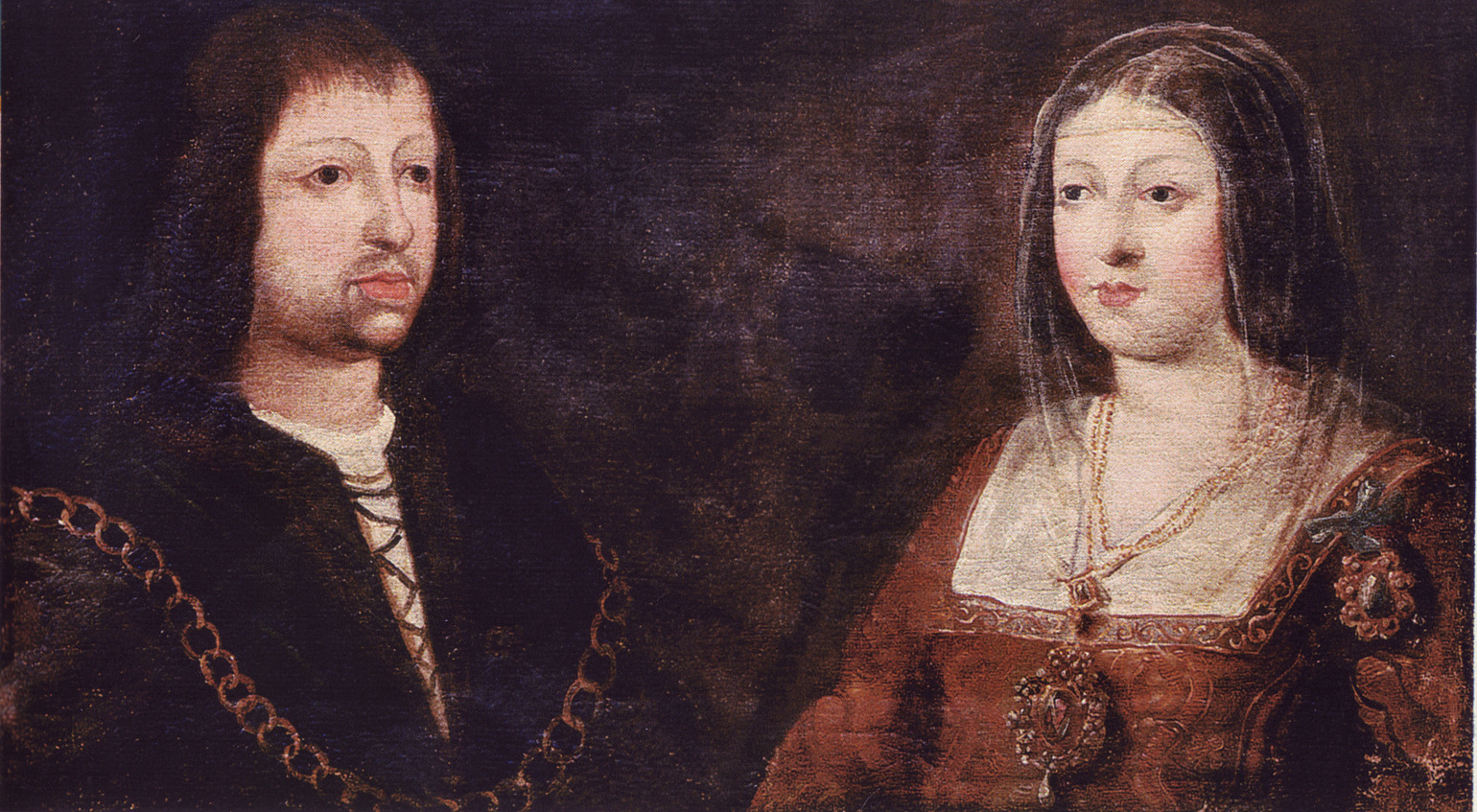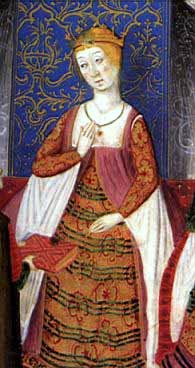|
1492
Year 1492 ( MCDXCII) was a leap year starting on Sunday (link will display the full calendar) of the Julian calendar. 1492 is considered to be a significant year in the history of the West, Europe, Christianity, Islam, Judaism, Spain, and the New World, among others, because of the number of significant events that took place. The events which propelled the year into Western consciousness, listed below, include the completion of the Reconquista of Spain, Europe's (Spain) discovery of the New World, and the expulsion of Jews from Spain. Events Known dates * January 2 – Fall of Granada: Muhammad XII, the last Emir of Granada, surrenders his city to the army of the Catholic Monarchs ( Ferdinand II of Aragon and Isabella I of Castile) after a lengthy siege, ending the ten-year Granada War and the centuries-long Reconquista, and bringing an end to 780 years of Muslim control in Al-Andalus. * January 6 – Ferdinand and Isabella enter Granada. * January 15 &nda ... [...More Info...] [...Related Items...] OR: [Wikipedia] [Google] [Baidu] |
Christopher Columbus
Christopher Columbus * lij, Cristoffa C(or)ombo * es, link=no, Cristóbal Colón * pt, Cristóvão Colombo * ca, Cristòfor (or ) * la, Christophorus Columbus. (; born between 25 August and 31 October 1451, died 20 May 1506) was an Italian explorer and navigator who completed four voyages across the Atlantic Ocean sponsored by the Catholic Monarchs of Spain, opening the way for the widespread European exploration and colonization of the Americas. His expeditions were the first known European contact with the Caribbean, Central America, and South America. The name ''Christopher Columbus'' is the anglicisation of the Latin . Scholars generally agree that Columbus was born in the Republic of Genoa and spoke a dialect of Ligurian as his first language. He went to sea at a young age and travelled widely, as far north as the British Isles and as far south as what is now Ghana. He married Portuguese noblewoman Filipa Moniz Perestrelo, who bore his son Diego, and w ... [...More Info...] [...Related Items...] OR: [Wikipedia] [Google] [Baidu] |
Expulsion Of Jews From Spain
The Expulsion of Jews from Spain was the expulsion from Spain following the Alhambra Decree in 1492, which was enacted in order to eliminate their influence on Spain's large '' converso'' population and to ensure its members did not revert to Judaism, many Jews in Spain either converted or were expelled. Over half of Spain's Jews had converted to Catholicism as a result of the Massacre of 1391. Due to continuing attacks, around 50,000 more had converted by 1415. Those who remained decided to convert to avoid expulsion. As a result of the Alhambra decree and the prior persecution, over 200,000 Jews converted to Catholicism and between 40,000 and 100,000 were expelled. An unknown number returned to Spain in the following years. The resulting expulsion led to mass migration of Jews from Spain to Italy, Greece, Turkey and the Mediterranean Basin. At the time, this can be seen in Jewish surnames beginning to show up in Italy and Greece. The surnames Faraggi, Farag and Farachi, for exa ... [...More Info...] [...Related Items...] OR: [Wikipedia] [Google] [Baidu] |
Ferdinand II Of Aragon
Ferdinand II ( an, Ferrando; ca, Ferran; eu, Errando; it, Ferdinando; la, Ferdinandus; es, Fernando; 10 March 1452 – 23 January 1516), also called Ferdinand the Catholic (Spanish: ''el Católico''), was King of Aragon and List of Sardinian monarchs, Sardinia from 1479, King of Sicily from 1468, King of Naples (as Ferdinand III) from 1504 and King of Navarre (as Ferdinand I) from 1512 until his death in 1516. He was also the nominal Duke of the ancient Duchy, Duchies of Duchy of Athens, Athens and Duchy of Neopatras, Neopatria. He was King of Castile, King of Castile and León (as Ferdinand V) from 1475 to 1504, alongside his wife Queen Isabella I. From 1506 to 1516, he was the Regent of the Crown of Castile, making him the effective ruler of Castile. From 1511 to 1516, he styled himself as Imperator, ''Imperator totius Africa'' (Emperor of All Africa) after having conquered Kingdom of Tlemcen, Tlemcen and making the Zayyanid dynasty, Zayyanid Sultan, Abu Abdallah V, his v ... [...More Info...] [...Related Items...] OR: [Wikipedia] [Google] [Baidu] |
Catholic Monarchs
The Catholic Monarchs were Queen Isabella I of Castile and King Ferdinand II of Aragon, whose marriage and joint rule marked the ''de facto'' unification of Spain. They were both from the House of Trastámara and were second cousins, being both descended from John I of Castile; to remove the obstacle that this consanguinity would otherwise have posed to their marriage under canon law, they were given a papal dispensation by Sixtus IV. They married on October 19, 1469, in the city of Valladolid; Isabella was eighteen years old and Ferdinand a year younger. It is generally accepted by most scholars that the unification of Spain can essentially be traced back to the marriage of Ferdinand and Isabella. Spain was formed as a dynastic union of two crowns rather than a unitary state, as Castile and Aragon remained separate kingdoms until the Nueva Planta decrees of 1707–16. The court of Ferdinand and Isabella was constantly on the move, in order to bolster local support for t ... [...More Info...] [...Related Items...] OR: [Wikipedia] [Google] [Baidu] |
Isabella I Of Castile
Isabella I ( es, Isabel I; 22 April 1451 – 26 November 1504), also called Isabella the Catholic (Spanish: ''la Católica''), was Queen of Castile from 1474 until her death in 1504, as well as Queen consort of Aragon from 1479 until 1504 by virtue of her marriage to King Ferdinand II of Aragon. Reigning together over a dynastically unified Spain, Isabella and Ferdinand are known as the Catholic Monarchs. After a struggle to claim the throne, Isabella reorganized the governmental system, brought the crime rate to the lowest it had been in years, and unburdened the kingdom of the enormous debt her half-brother King Henry IV had left behind. Isabella's marriage to Ferdinand in 1469 created the basis of the ''de facto'' unification of Spain. Her reforms and those she made with her husband had an influence that extended well beyond the borders of their united kingdoms. Isabella I of Castile and Ferdinand II of Aragon are known for being the first monarchs to be referred to a ... [...More Info...] [...Related Items...] OR: [Wikipedia] [Google] [Baidu] |
Reconquista
The ' ( Spanish, Portuguese and Galician for "reconquest") is a historiographical construction describing the 781-year period in the history of the Iberian Peninsula between the Umayyad conquest of Hispania in 711 and the fall of the Nasrid kingdom of Granada in 1492, in which the Christian kingdoms expanded through war and conquered al-Andalus; the territories of Iberia ruled by Muslims. The beginning of the ''Reconquista'' is traditionally marked with the Battle of Covadonga (718 or 722), the first known victory by Christian military forces in Hispania since the 711 military invasion which was undertaken by combined Arab- Berber forces. The rebels who were led by Pelagius defeated a Muslim army in the mountains of northern Hispania and established the independent Christian Kingdom of Asturias. In the late 10th century, the Umayyad vizier Almanzor waged military campaigns for 30 years to subjugate the northern Christian kingdoms. His armies ravaged the nor ... [...More Info...] [...Related Items...] OR: [Wikipedia] [Google] [Baidu] |
Al-Andalus
Al-Andalus translit. ; an, al-Andalus; ast, al-Ándalus; eu, al-Andalus; ber, ⴰⵏⴷⴰⵍⵓⵙ, label= Berber, translit=Andalus; ca, al-Àndalus; gl, al-Andalus; oc, Al Andalús; pt, al-Ândalus; es, al-Ándalus () was the Muslim-ruled area of the Iberian Peninsula. The term is used by modern historians for the former Islamic states in modern Spain and Portugal. At its greatest geographical extent, it occupied most of the peninsula and a part of present-day southern France, Septimania (8th century). For nearly a hundred years, from the 9th century to the 10th, al-Andalus extended its presence from Fraxinetum into the Alps with a series of organized raids and chronic banditry. The name describes the different Arab and Muslim states that controlled these territories at various times between 711 and 1492. These boundaries changed constantly as the Christian Reconquista progressed,"Para los autores árabes medievales, el término Al-Andalus designa la totalidad ... [...More Info...] [...Related Items...] OR: [Wikipedia] [Google] [Baidu] |
Emirate Of Granada
) , common_languages = Official language: Classical ArabicOther languages: Andalusi Arabic, Mozarabic, Berber, Ladino , capital = Granada , religion = Majority religion: Sunni IslamMinority religions:Roman CatholicismJudaism , leader1 = Muhammad I , leader2 = Muhammad XII , year_leader1 = 1238–1273 , year_leader2 = 1487–1492 , title_leader = Sultan , today = , stat_year1 = 1314 , stat_pop1 = 200,000 , ref_pop1 = The Emirate of Granada ( ar, إمارة غرﻧﺎﻃﺔ, Imārat Ġarnāṭah), also known as the Nasrid Kingdom of Granada ( es, Reino Nazarí de Granada), was an Islamic realm in southern Iberia during the Late Middle Ages. It was the last independent Muslim state in Western Europe. Muslims had been present in the Iberian Peninsula, which they called ''Al-Andalus'', since the early eighth cent ... [...More Info...] [...Related Items...] OR: [Wikipedia] [Google] [Baidu] |
Spain
, image_flag = Bandera de España.svg , image_coat = Escudo de España (mazonado).svg , national_motto = '' Plus ultra'' ( Latin)(English: "Further Beyond") , national_anthem = (English: "Royal March") , image_map = , map_caption = , image_map2 = , capital = Madrid , coordinates = , largest_city = Madrid , languages_type = Official language , languages = Spanish , ethnic_groups = , ethnic_groups_year = , ethnic_groups_ref = , religion = , religion_ref = , religion_year = 2020 , demonym = , government_type = Unitary parliamentary constitutional monarchy , leader_title1 = Monarch , leader_name1 = Felipe VI , leader_title2 = Prime Minister , leader_name2 = Pedro Sánchez , legislature = ... [...More Info...] [...Related Items...] OR: [Wikipedia] [Google] [Baidu] |
Granada
Granada (,, DIN: ; grc, Ἐλιβύργη, Elibýrgē; la, Illiberis or . ) is the capital city of the province of Granada, in the autonomous community of Andalusia, Spain. Granada is located at the foot of the Sierra Nevada mountains, at the confluence of four rivers, the Darro, the Genil, the Monachil and the Beiro. Ascribed to the Vega de Granada ''comarca'', the city sits at an average elevation of above sea level, yet is only one hour by car from the Mediterranean coast, the Costa Tropical. Nearby is the Sierra Nevada Ski Station, where the FIS Alpine World Ski Championships 1996 were held. In the 2021 national census, the population of the city of Granada proper was 227,383, and the population of the entire municipal area was estimated to be 231,775, ranking as the 20th-largest urban area of Spain. About 3.3% of the population did not hold Spanish citizenship, the largest number of these people (31%; or 1% of the total population) coming from South America. Its nearest ... [...More Info...] [...Related Items...] OR: [Wikipedia] [Google] [Baidu] |
Granada War
The Granada War ( es, Guerra de Granada) was a series of military campaigns between 1482 and 1491 during the reign of the Catholic Monarchs, Isabella I of Castile and Ferdinand II of Aragon, against the Nasrid dynasty's Emirate of Granada. It ended with the defeat of Granada and its annexation by Castile, ending the last remnant of Islamic rule on the Iberian peninsula. The ten-year war was not a continuous effort but a series of seasonal campaigns launched in spring and broken off in winter. The Granadans were crippled by internal conflict and civil war, while the Christians were generally unified. The Granadans were also bled economically by the tribute ( osp, paria) they had to pay Castile to avoid being attacked and conquered. The war saw the effective use of artillery by the Christians to rapidly conquer towns that would otherwise have required long sieges. On January 2, 1492, Muhammad XII of Granada (King Boabdil) surrendered the Emirate of Granada, the city of Granada ... [...More Info...] [...Related Items...] OR: [Wikipedia] [Google] [Baidu] |








.jpg)